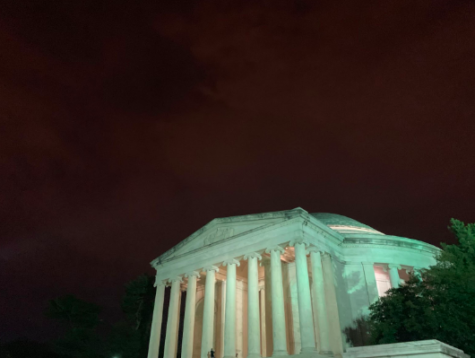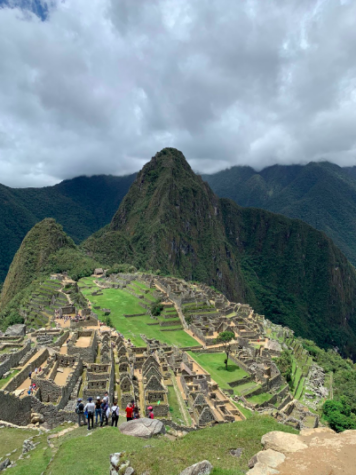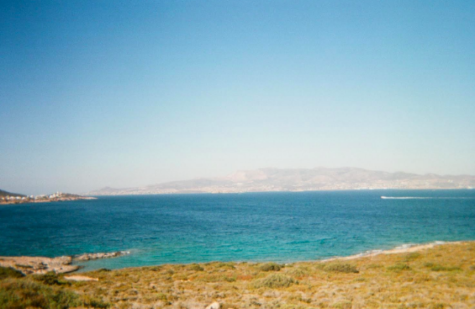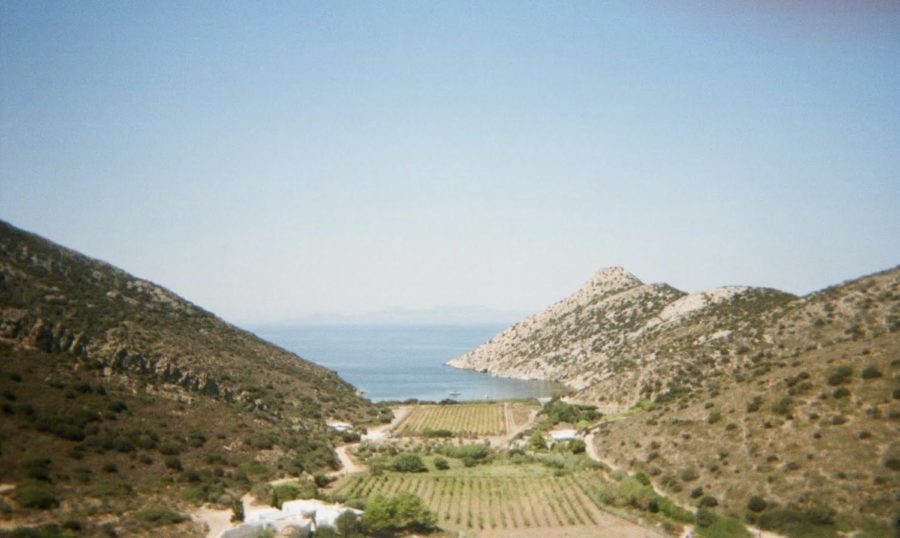The International Monetary Fund: Firefighter or Arsonist?
The IMF has decimated the development trajectory of poor nations through austerity, privatization, and rapid trade liberalization. Now, the organization must be held accountable.
The IMF currently has 1 trillion dollars in terms of lending capacity. The organization loans money to dozens of countries, including Greece (depicted above), worldwide.
While the International Monetary Fund (IMF) has long been lauded as the “firefighter of financial crises,” to steal a Billy Joel line, it is the IMF that started the fire. By demolishing development across large swaths of Africa and Latin America, the IMF has scorched the earth and blackened blue skies.
The IMF’s most pernicious practice lies in its loans. Countries summon the IMF when they can no longer finance imports or service their debt to creditors. In the throes of an economic crisis, the IMF offers a one-size-fits-all solution by extending a loan to the government and implementing IMF reforms. These reforms are designed to balance their payments and restore foreign exchange reserves in their central bank.
In theory, the IMF is an economic fairy godmother who, with a sparkle of stardust and the mists of magic, can wipe out debt and promote sustainable growth. In reality, the IMF’s reforms — privatization, austerity, rapid trade liberalization — are the work of a fair-faced, nightmarish evil stepmother. As Ava Kawamura ’22 noted, “In principle, the IMF’s policies could grow the economies of developing nations. In practice, they stunt development for decades.”
Importantly, IMF loans exist not to help the poor but to protect Western banks. The IMF helps countries to repay creditors to absolve them from the cost of mistaken lending while saddling developing nations with a crushing to-do list.
The western-oriented nature of this financial giant is reflected in its history and voting structure. The IMF is a neo-imperialist power created at the Bretton Woods Conference in 1944 with the overarching goal of establishing a postwar financial order that would promote cross border economic cooperation and prevent further currency warfare which contributed to the Great Depression. However, the organization quickly adapted to serve the interests of industrial powerhouses by prying open developing world economies to allow western corporations access to their raw materials and markets.
The voting structure of the IMF facilitates western control. Out of the 194 member countries, there are 155 low and middle-income nations that comprise the majority but control less than 50% of the voting share. The United States alone, a significant financial contributor to the IMF, controls 16% of the vote. Overall, for every vote that the average person in the North has, the average person in the global South has only one-eighth of a vote.

The IMF’s most deleterious, widespread involvement in poor countries began during the 1980s debt crisis which plunged 125 million people into poverty. The inability of developing nations to service their debt catalyzed this cataclysmic period of economic decline, setting off a fire that many believed only the IMF could put out.
As a result, the IMF prescribed a truly hard financial pill for Africa and Latin America to swallow. In exchange for loans, the IMF administered structural adjustment programs which involved austerity, privatization, and trade liberalization.
Austerity involved massive budget cuts that illustrated the contrast between high-income nations’ Keynesian economic practices, involving stimulus and robust public spending, and low-income nations’ ever-dwindling expenditures. In Africa, following the 1980s debt crisis, IMF programs reduced education spending by 25% and healthcare spending by 50%. Moreover, work requirements restricted the remaining spending to a small portion of the population, cutting up to half of the poor from welfare.
A devastating case study of the effects of IMF healthcare policies lies in Zimbabwe. The IMF eviscerated Zimbabwe’s public health budget which now cannot fund preventative care, medical supplies, or district hospital costs. Moreover, the establishment of user fees for healthcare skyrocketed costs by 1000%, leading to double the amount of women dying in childbirth and high rates of stunting in children under five.
In total, Africa now spends four times more on debt interest payments than on healthcare, leaving more than 200 million Africans with no access to medical facilities or supplies. With crippling health infrastructure, Africa now accounts for 80% of the world’s deaths due to AIDS and 90% of the world’s deaths due to malaria. More broadly, as millions of people lose access to basic goods and services, entire nations fall into the dire straits of poverty and economic downturns that extend through the years.
Beyond welfare, IMF mandated privatization leads to the transfer of government assets to the private sector. This increases prices as for-profit corporations price gouge, leading to price surges for the most basic of goods including food, water, and fuel. In Peru, privatization increased the price of goods by 450% and inflated water prices by 60%. A similar phenomenon in Zambia made seven million people food insecure.
Lastly, rapid trade liberalization — the gas to the fire — has been the death blow to developing world economies for decades. While all developing nation success stories — the United States, China, Japan — employed gradual approaches to liberalization, with governments levying tariffs and buffering the economy against volatile markets, the IMF prescribes the opposite. By eliminating subsidies and stripping protective tariffs from domestic industries, the institution prematurely exposes industries in their infancy to crushing competition with established industrial powerhouses.
In the absence of tariffs, imports become significantly cheaper, inviting deadly competition from western corporations. As a result, industries, such as the textile industry in Africa, suffered massively due to liberalization. Moreover, the elimination of subsidies, indispensable investment which once enabled domestic firms to withstand competition, further exacerbated the economic harms of rapidly opening up developing world markets.
African and Latin American manufacturing has now stagnated and the regions possess few tradable goods. In his critically acclaimed book Making Globalization Work, Joseph Stiglitz explains that while advanced countries levy tariffs and subsidies, developing countries abandon them, costing poor nations billions as they import more than they export and granting rich countries 70% of trade benefits.
Thus, structural adjustment slashed developing world growth in half and eviscerated emerging economies, plunging 60 million Latin Americans into poverty, increasing African poverty by 75% while also decreasing incomes by 25%.

Still, the key question lies in what could have been absent the IMF. Unfortunately, Harvard economist Benjamin M. Friedman argues that “we cannot reliably know whether the consequences of the IMF’s policies were worse than whatever the alternative would have been.” Yet, independent of the possibility of a world in which developing nations dictated their own recovery policies for the 1980s debt crisis and future periods of economic decline, the IMF had a responsibility to cater structural adjustment to the needs of the poor and not to the desires of the rich.
While the IMF has received scathing criticisms from economists ranging from Joseph Stiglitz to William Easterly, reform has stalled. In 2009, the ‘financial firefighter’ announced reforms to its lending conditions that would allow for greater country-specific tailoring and focus on poverty alleviation. However, when Greece defaulted on its debt in 2015, the IMF pulled policies from its classic playbook, worsening the economic decline.
Despite a clear ‘no’ vote in a referendum on whether to accept the IMF’s loan conditions, the Greek government accepted IMF assistance. Thus, taxes surged, pensions tanked, and industries privatized. Evidently, many of the IMF’s reforms hold greater promise on paper than in policy.

“The IMF isn’t fooling anyone. Until we see a tailored, radically different approach to bailouts, it is safe to say that nothing has changed,” Sela Emery ’23 said.
Discarding the one-size-fits-all model for development and constructing more long-term plans for the gradual integration of poor countries into the global market would legitimize the IMF and promote growth for decades. In order to truly transition from the position of arsonist to firefighter, the IMF must make tangible reforms.
“In principle, the IMF’s policies could grow the economies of developing nations. In practice, they stunt development for decades,” said Ava Kawamura ’22.
Katia Anastas is an Editor in Chief for ‘The Science Survey.’ She loves that journalistic writing equally emphasizes creativity and truth, while allowing...











